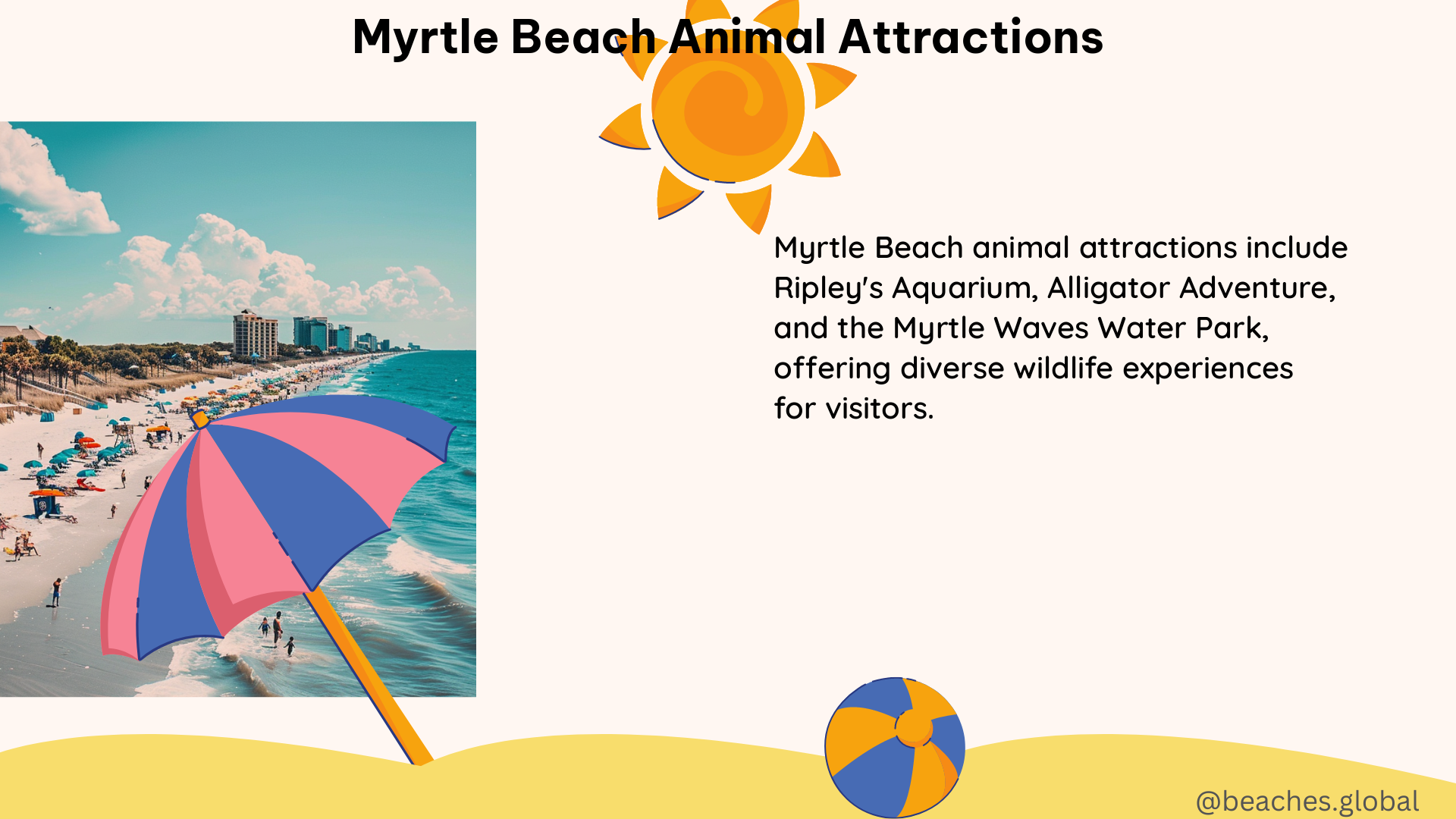Myrtle Beach, South Carolina, is a popular vacation destination known for its beautiful beaches, vibrant entertainment, and diverse array of animal attractions. From aquariums and zoos to petting farms and nature preserves, this coastal city offers a wide range of opportunities to interact with and learn about various species of wildlife.
Ripley’s Aquarium of Myrtle Beach
Ripley’s Aquarium of Myrtle Beach is a must-visit attraction for anyone interested in marine life. This state-of-the-art facility features a variety of exhibits, including the Living Gallery, which showcases a diverse array of aquatic creatures, and the underwater tunnel, where visitors can walk beneath a 750,000-gallon tank filled with sharks, rays, and other fascinating sea creatures.
Visitors can also enjoy interactive experiences, such as the touch tank, where they can gently interact with stingrays and other gentle marine animals, and the animal feedings, where they can witness the feeding of various species.
Alligator Adventure

Alligator Adventure is a unique attraction that offers visitors the opportunity to see a wide range of reptiles, including alligators, crocodiles, and various species of snakes. The park is home to Utan, a massive Nile crocodile, as well as a variety of other mammals, birds, and amphibians.
Visitors can explore the park’s exhibits, attend educational presentations, and even participate in guided tours to learn more about the fascinating world of reptiles.
Thompson Farm and Nursery Petting Zoo
For a more hands-on animal experience, visitors can head to the Thompson Farm and Nursery Petting Zoo. This family-friendly attraction allows guests to interact with a variety of domestic animals, including goats, sheep, pigs, and more. Visitors can also enjoy other outdoor activities, such as hayrides and a corn maze.
The petting zoo is open seasonally, typically from April to October, so be sure to check the website for the latest information on hours and availability.
Myrtle Beach State Park
Myrtle Beach State Park is a natural oasis that offers visitors the opportunity to observe a wide range of wildlife in their natural habitats. The park’s Sculptured Oak Nature Trail is a popular spot for birdwatching, and visitors may also spot deer, raccoons, and other small mammals during their visit.
In addition to wildlife viewing, the park offers opportunities for fishing, hiking, and other outdoor activities.
Myrtle Beach Safari
For a truly unique animal experience, visitors can explore the Myrtle Beach Safari. This private wildlife preserve offers guided tours that allow guests to get up close and personal with a variety of exotic animals, including ligers, cheetahs, and baby chimpanzees.
The Myrtle Beach Safari offers a range of tour options, including the Wild Encounters Tour Day Safari, which provides a behind-the-scenes look at the facility and its animal residents.
Lowcountry Zoo at Brookgreen Gardens
The Lowcountry Zoo at Brookgreen Gardens is a hidden gem that showcases a variety of native and domestic animals. Visitors can see otters, foxes, alligators, and deer, as well as an aviary filled with a variety of bird species.
The zoo is part of the larger Brookgreen Gardens, which offers a variety of other attractions, including sculpture gardens and nature trails.
T.I.G.E.R.S. Preservation Station
Located at Barefoot Landing, the T.I.G.E.R.S. Preservation Station offers visitors the opportunity to interact with and learn about a variety of exotic animals, including chimpanzees, elephants, and big cats.
The station offers a range of tour and encounter options, allowing visitors to get up close and personal with these remarkable creatures.
Whether you’re interested in marine life, reptiles, or exotic animals, Myrtle Beach has a wealth of animal attractions to explore. By planning your visit and taking advantage of the unique experiences offered at these destinations, you can create a truly memorable and educational vacation.
